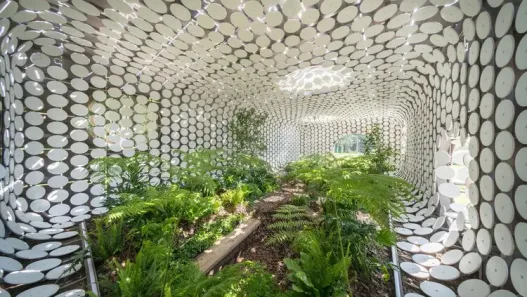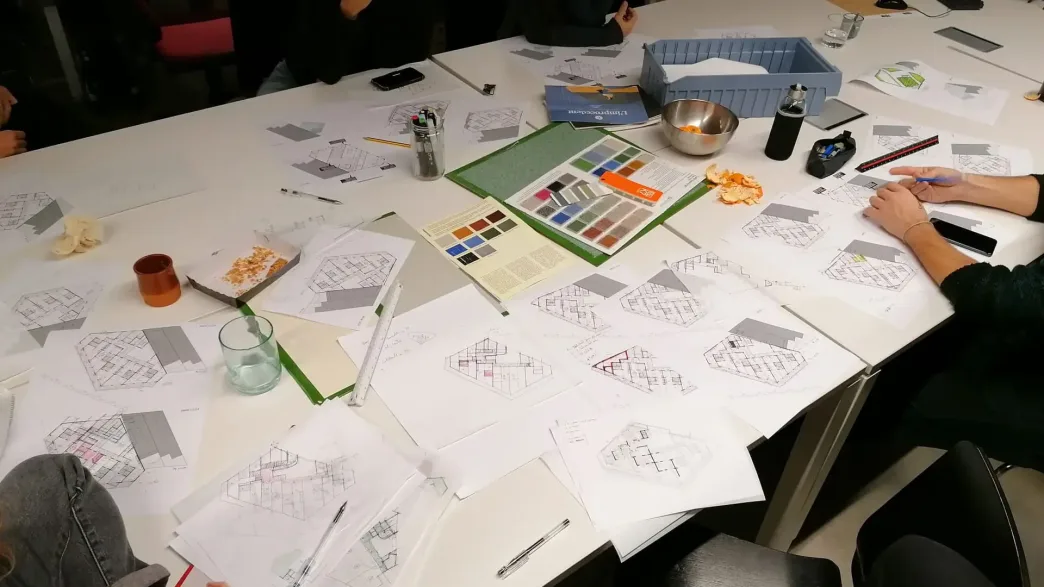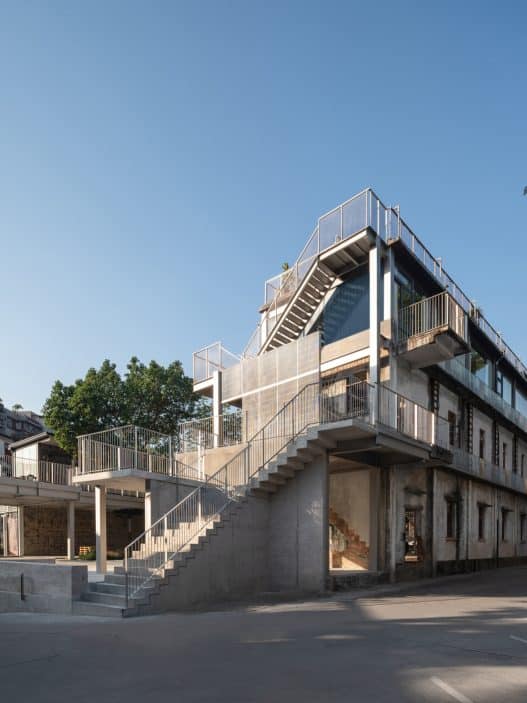Architecture is much more than the art of designing buildings; it is a reflection of society’s evolution, culture, and technological advances. As we move into the digital age, architecture schools are adapting their curricula to prepare future architects for the challenges and opportunities that lie ahead.

The Evolution of Architectural Education
Historical Context
Architectural education has a rich history that reflects the development of architecture itself. In ancient times, knowledge was passed on through apprenticeships, where master builders taught their craft to aspiring students. The Renaissance marked a significant change in Europe with the emergence of formal schools that emphasized not only building techniques but also the integration of art and science. As cities grew and architectural styles developed, institutions began to formalize education through structured programs. This historical context provides the backdrop for understanding how today’s architecture schools have evolved, embracing both tradition and innovation.
Technological Developments
With the advancement of technology, architectural education has also transformed. The introduction of computer-aided design (CAD) has revolutionized the way architects visualize and present their ideas. Today, students are trained in sophisticated software that enables complex designs and simulations. Virtual reality (VR) and augmented reality (AR) are now integral tools that allow students to immerse themselves in their projects and understand spatial relationships in ways previously unimaginable. These technological advances not only enhance the learning experience, they also prepare students for the demands of a rapidly changing profession.
Curriculum Changes Over Time
As the profession evolves, so does the curriculum in architecture schools. While traditional design principles and practices remain important, there is an increasing emphasis on sustainability, urban design, and social responsibility. Schools are integrating interdisciplinary approaches, drawing on fields such as engineering, environmental science, and sociology. This holistic perspective equips students with the skills to address contemporary challenges such as climate change and urbanization. Curricula now often include hands-on projects, community engagement, and real-world problem solving, encouraging a sense of responsibility and innovation in future architects.
Influential Architectural Movements
Architectural movements have always influenced educational trends. The Modernist movement reshaped architectural education in the 20th century with its emphasis on functionality and simplicity, and its focus on rational design processes. Later, Postmodernism encouraged schools to explore a wider range of styles and philosophies by introducing eclecticism and historical references. Today, movements such as sustainable architecture and biophilic design are driving new educational paradigms. By studying these movements, students gain a deeper understanding of architectural theory and its impact on society, and are thus able to create designs that resonate with cultural and environmental contexts.
The Role of Accreditation
Accreditation plays a crucial role in architectural education, ensuring that institutions meet certain standards of quality and rigor. Accrediting agencies evaluate programs based on a variety of criteria, including curriculum, faculty qualifications, and facilities. This process not only ensures that students are receiving a comprehensive education, but also increases the credibility of their degrees in the job market. Additionally, as the profession evolves, accreditation standards adapt to include new competencies related to technology and sustainability, ensuring that graduates are well-equipped for the future.
In summary, the evolution of architectural education reflects the dynamic interplay between history, technology, and societal needs. As architecture schools embrace the digital revolution, they are not only preparing students for careers in design, but also shaping the future of our built environment. By understanding this evolution, we can appreciate the complexity of architectural education and its vital role in addressing the challenges of tomorrow.
The world of architecture is rapidly changing due to advances in technology and the increasing demand for innovative solutions. As these changes occur, architecture schools play a crucial role in preparing future architects to succeed in this digital age. By integrating cutting-edge technology into their curricula, these institutions are not only enhancing their educational experience, but also ensuring that students are equipped with the skills needed to navigate the complexities of modern architectural practice.
Integrating Technology into the Curriculum
When examining the integration of technology into architectural education, it is crucial to recognize that this approach is not simply about embracing new tools; it is about reshaping the very essence of architectural design and education. By embracing technology, schools foster a dynamic learning environment where creativity and technical expertise intersect.
Digital Design Tools
Digital design tools have revolutionized the way architects conceptualize and create their projects. Ranging from graphic design software to advanced 3D modeling applications, these tools allow students to visualize their ideas in ways that traditional methods cannot. For example, programs like AutoCAD and SketchUp allow students to produce precise drawings and complex models, facilitating a deeper understanding of spatial relationships and design principles.
What’s more, these tools encourage experimentation. Students can easily modify their designs, explore various iterations, and see the immediate impact of their changes. This iterative process not only sharpens design skills, but also fosters an innovation mindset that is essential to tackling the challenges of contemporary architecture.
Virtual Reality and Simulations
Virtual reality (VR) and simulations represent a significant leap forward in architectural education. Students can immerse themselves in virtual environments and experience their designs as if they were real. This experience is invaluable because it allows them to consider spatial dynamics, scale, and user interaction in ways that static models cannot.
For example, architecture schools are increasingly using VR to conduct design reviews. Students can walk through their virtual buildings to get a sense of how people navigate and interact in their spaces. Such experiences encourage a deeper understanding of user-centered design, pushing students to consider the human experience in their architectural solutions.
Building Information Modeling (BIM)
Building Information Modeling (BIM) is another transformative technology that architecture schools are incorporating into their curriculum. BIM is a collaborative approach that allows architects and engineers to create a comprehensive digital representation of a building’s physical and functional characteristics. This holistic perspective is crucial to modern architectural practice, where collaboration among multiple stakeholders is essential.
By learning BIM, students understand the importance of integrated project delivery, where architects work with contractors and engineers from the beginning of the project. This collaborative spirit not only increases efficiency, but also reduces construction-related risks, ultimately leading to more sustainable and effective designs.
Online Learning Platforms
The rise of online learning platforms has further expanded the educational landscape for architecture students. These platforms provide access to a wealth of resources, including lectures, tutorials, and workshops from world-renowned professionals. Students can learn at their own pace, reviewing complex concepts as needed, and complementing the more traditional classroom experience.
Additionally, online platforms facilitate a more inclusive learning environment. Students from diverse backgrounds can participate in discussions, bringing different perspectives and ideas. This diversity enriches the educational experience and prepares students to interact with a globalized world in their future careers.
Collaboration with Technology Companies
Architecture schools are increasingly partnering with tech companies to stay at the forefront of innovation. These collaborations often lead to the development of new tools and methodologies, ensuring that the curriculum reflects the latest industry standards. For students, these partnerships provide invaluable opportunities for internships, hands-on projects, and exposure to real-world challenges.
For example, a school might partner with a software company to develop a new design application tailored to architectural needs. Students can participate in beta testing and provide feedback that shapes the final product. Such experiences not only develop skills, but also make vital industry connections, paving the way for successful careers.
As a result, architecture schools are embracing the digital revolution by integrating technology into their curriculum. From digital design tools and virtual reality to BIM and online learning platforms, these innovations are preparing students for the complexities of modern architectural practice. By encouraging collaboration with technology companies and supporting hands-on learning experiences, schools are developing a new generation of architects who are ready to shape the future of our built environment. As technology continues to advance, approaches to architectural education will also evolve, ensuring that tomorrow’s architects are equipped to meet the challenges and opportunities that lie ahead.
In an era of rapid technological advances and heightened awareness of environmental issues, architecture schools are at the forefront of change. They are not just teaching design and construction principles; they are evolving to integrate sustainability, digital tools, and innovative practices into their curricula. This transformation is essential to preparing future architects to meet the challenges of tomorrow’s world.
The Impact of Sustainability on Architectural Education
Sustainability has become a cornerstone of modern architectural education, shaping how students learn and approach design. As the effects of climate change become increasingly evident, architecture schools are emphasizing the importance of environmentally responsible practices. This shift is not only affecting the curriculum, but also how future architects will engage with their communities and the built environment.
Green Building Applications
Green building practices are a staple of architectural education today. These practices focus on creating structures that minimize environmental impact while maximizing energy efficiency and the health of building occupants. Students learn concepts such as passive solar design, which uses sunlight for heating and lighting, and the importance of site selection to reduce a building’s ecological footprint.
Real-world applications of these practices can be seen in projects that prioritize natural ventilation and the use of renewable energy sources. For example, many schools now include hands-on projects where students design and build small structures using green principles. This experiential learning helps students understand the practical implications of their designs while also developing a sense of environmental responsibility.
Sustainable Materials and Technologies
Material selection plays a crucial role in sustainable architecture. Architecture schools increasingly teach students to evaluate materials not only for their aesthetic value, but also for their environmental impact. This includes understanding life cycle assessments, which examine the environmental impact of a material from its extraction to its disposal.
Students are exposed to innovative materials such as recycled steel, bamboo and rammed earth that offer lower ecological impacts than traditional options. Schools are also integrating technology into the learning process by offering software that can simulate energy use and material efficiency. By the time they graduate, students will have the knowledge to make informed choices about materials that will contribute to sustainable building practices.
Community Participation Projects
Architecture isn’t just about buildings; it’s also about the communities they serve. Many architecture programs emphasize community engagement through projects that involve local stakeholders. These initiatives teach students to collaborate with local residents and understand their needs, ensuring that their designs are not only functional but also culturally and socially appropriate.
These types of projects often involve revitalizing public spaces or designing affordable housing, allowing students to see the direct impact of their work. For example, a recent project involved transforming a vacant lot into a community garden, demonstrating how thoughtful design can improve the quality of life for residents. This hands-on approach fosters a sense of social responsibility and encourages future architects to think critically about their role in society.
Energy Efficiency Standards
Energy efficiency is a key component of sustainable architecture, and schools are integrating it into their education. Students learn about building codes and standards that promote energy conservation, such as LEED (Leadership in Energy and Environmental Design) certification. Understanding these standards helps students design buildings that not only meet codes, but also exceed them in terms of performance.
What’s more, architecture schools often include energy modeling in their curriculum, teaching students to use software that estimates a building’s energy use. This skill is vital for creating designs that minimize energy consumption while maximizing comfort. By focusing on energy efficiency, schools prepare students to create buildings that are not only sustainable today, but also resilient for the future.
Case Studies in Sustainable Design
To ground theoretical knowledge in real-world applications, architecture schools often use case studies of successful sustainable designs. Analyzing these projects allows students to see how innovative solutions are applied in practice. For example, they might examine the Bullitt Center in Seattle, which has been called the world’s greenest commercial building and showcases cutting-edge sustainability practices.
These case studies provide insight into the challenges architects face and the creative solutions they develop. They encourage students to think critically and inspire them to push the boundaries of what is possible in sustainable design. By learning from the successes and failures of others, future architects can develop a nuanced understanding of sustainable practices that they can apply in their own careers.
As a result, the impact of sustainability on architectural education is profound and multifaceted. As architecture schools adapt to the digital revolution and the urgent need for environmental responsibility, they are equipping a new generation of architects with the knowledge, skills, and values needed to create a more sustainable future. Through a blend of theory and hands-on experience, students are prepared to take the lead in shaping a built environment that respects both people and the planet.
In today’s rapidly changing world, the field of architecture is undergoing transformative change. As digital technology reshapes the way we design, build, and interact with spaces, architecture schools are increasingly focusing on interdisciplinary learning. This approach not only enriches the educational experience, but also prepares future architects to tackle complex challenges in innovative ways.
The Role of Interdisciplinary Learning
Interdisciplinary learning is at the core of modern architectural education. It encourages students to explore beyond traditional boundaries and integrates knowledge from diverse fields to develop design thinking. By collaborating with experts from different disciplines, architecture students gain different perspectives that enrich their understanding of the built environment.
Interdisciplinary learning encourages creativity and innovation. It allows students to approach problems holistically, considering social, environmental, technological and artistic aspects in their designs. This comprehensive understanding is vital in a world where architecture must address multifaceted issues such as sustainability, urbanization and community needs.
Collaboration with Other Areas
Collaboration with fields such as urban planning, environmental science, and information technology is essential for architecture students. By working with professionals in these fields, students can learn how to create designs that are not only aesthetically pleasing but also functional and sustainable. For example, an architecture student can partner with city planners to understand zoning laws and community needs so that their designs positively impact the environment.
Real-world examples of cities that have adopted collaborative design processes abound. Projects like the High Line in New York City highlight how architects, landscape designers, and urban planners can work together to redesign spaces in ways that benefit both the environment and society. Such collaborations lead to innovative solutions that might not have emerged when working alone.
Importance of Urban Studies
Urban studies plays an important role in architectural education. Understanding the dynamics of urban environments helps students grasp the complexities they face when designing livable spaces. Urban studies encompasses a range of topics, including demography, transportation, and social equity, all of which are essential to creating functional and inclusive designs.
Architecture schools prepare students to interact with ever-evolving cities by incorporating urban studies into their curriculum. A deep understanding of urbanization trends allows future architects to design spaces that not only respond to current needs but are also adaptable to future growth. For example, students can explore how to design public spaces that encourage social interaction while addressing issues such as accessibility and environmental impact.
Integrating Engineering Principles
The integration of engineering principles into architectural education is another important aspect of interdisciplinary learning. Architecture and engineering are inherently interconnected, as both fields aim to create safe, functional, and aesthetically pleasing structures. Architecture students can approach design with a more technical mindset by understanding structural engineering, materials science, and environmental systems.
This knowledge is particularly valuable when dealing with complex projects such as skyscrapers or sustainable buildings. For example, an architecture student who understands the principles of load-bearing structures can create designs that are not only visually striking but also structurally sound. This synergy between architecture and engineering leads to innovative solutions that push the boundaries of what is possible in construction.
Integrating Art and Design
Art and design are an integral part of architecture and their inclusion within the educational framework enriches the creative process. Architecture students are encouraged to explore a variety of artistic expressions, from sculpture to painting, that can influence their architectural designs. This integration fosters a deeper appreciation for aesthetics and allows students to bring a unique artistic vision to their projects.
Furthermore, incorporating artistic principles into architectural education helps students understand the emotional impact of spaces. For example, they can explore how light, color, and texture affect the human experience within a building. This understanding is crucial to creating environments that are not only functional but also inspiring and engaging.
The Impact of Social Sciences
The influence of the social sciences on architecture is profound, as they provide insight into human behavior, cultural contexts, and societal needs. Architecture students who study psychology, sociology, and anthropology learn how people interact with their environments. This knowledge is essential for designing spaces that promote well-being and strengthen community connections.
For example, understanding social dynamics can inform the design of public spaces that encourage social interaction and inclusivity. By analyzing how different cultures use space, architecture students can come up with designs that respect and reflect diverse community values. Such considerations ensure that architectural designs serve not only as structures but also as catalysts for social change and harmony.
As a result, interdisciplinary learning is a cornerstone of contemporary architectural education. By embracing collaboration with other disciplines, understanding urban dynamics, integrating engineering principles, exploring art and design, and considering the social sciences, architecture schools prepare students to succeed in a complex and interconnected world. By leveraging these diverse perspectives, future architects will be equipped to produce innovative solutions that address tomorrow’s challenges.
Architecture as a field is constantly evolving in response to technological advances and changing societal needs. As we move deeper into the digital age, architecture schools are taking important steps to ensure that their students are not only prepared to face today’s challenges, but also equipped to succeed in a globalized workforce. This preparation encompasses a variety of aspects, from international exchange programs to understanding global architectural trends.
Preparing Students for a Globalized Workforce
As the architecture profession becomes increasingly interconnected, schools are focusing on preparing students for a workforce that crosses borders. This preparation goes beyond technical skills; it includes cultivating a mindset that values diversity, adaptability, and global awareness. Future architects must understand not only how to design buildings, but also how to navigate diverse cultural contexts, collaborate across geographies, and leverage technology for innovative solutions.
International Exchange Programs
International exchange programs are a cornerstone of this preparation, allowing students to immerse themselves in different cultures and architectural practices. Students who study abroad gain firsthand experience with how architecture can reflect local traditions, environmental concerns, and urban challenges. For example, a student who participates in a program in Japan can gain a wealth of perspective to use when returning home by exploring how traditional Japanese design principles inform modern sustainability efforts. Such experiences foster adaptability and open-mindedness, which are essential traits for success in a diverse global workforce.
Multicultural Perspectives in Design
Embracing multicultural perspectives in design is another vital aspect of preparing students for a globalized architecture environment. Schools are increasingly integrating courses that explore global architectural styles, historical influences, and the socio-political contexts of different regions. This not only broadens students’ design vocabulary, but also encourages them to think critically about how their work impacts diverse societies. For example, learning about indigenous building techniques can inspire contemporary architects to incorporate sustainable practices that respect local ecosystems and cultural heritage. By valuing these diverse perspectives, students become more well-rounded designers who can create spaces that resonate with a wide range of audiences.
Language and Communication Skills
In a world where collaboration often occurs across continents, language and communication skills are crucial. Architecture schools recognize the importance of teaching students not just technical jargon, but also the ability to communicate ideas clearly and effectively in multiple languages. Language proficiency can enhance collaboration with international teams and clients, enabling a richer exchange of ideas and more successful projects. For example, understanding the nuances of architectural discussions in different languages can provide a deeper appreciation of cultural context and ultimately enrich the design process.
Understanding Global Architecture Trends
Keeping up to date with global architectural trends is essential for any aspiring architect. Schools now offer courses that focus on current and emerging trends in sustainable design, urbanization, and technological integration. By examining case studies from around the world, students can observe how innovative solutions are being implemented to address common challenges such as climate change and population density. For example, examining the rise of smart cities in Europe informs students’ future designs by providing insight into how technology can improve urban life. This awareness equips them to contribute meaningfully to global conversations about the built environment.
Networking Opportunities with Global Companies
Finally, networking opportunities with global firms play a vital role in preparing students for their future careers. Many architecture schools partner with international firms to offer students internships and collaborative projects that provide real-world experience. These interactions not only enhance students’ resumes, but also provide opportunities for them to build relationships that can lead to job opportunities after graduation. Interacting with professionals from different cultural backgrounds enriches students’ educational experiences by exposing them to a variety of ways of thinking and problem-solving, and prepares them for the dynamic nature of the global architecture environment.
As a result, architecture schools are at the forefront of preparing students for a globalized workforce by embracing the digital revolution. Through international exchange programs, multicultural perspectives, communication skills, awareness of global trends, and networking opportunities, these institutions are educating the next generation of architects. As students enter an increasingly interconnected world, they will take with them the skills and understanding needed to design spaces that are not only functional but also culturally and environmentally respectful.
As the world rapidly evolves with technological advances and social changes, architecture schools play a crucial role in preparing future architects for the challenges and opportunities that lie ahead. In this new environment, education must adapt to include future trends that impact design, learning environments, and the very essence of architectural practice.
Future Trends in Architectural Education
The future of architectural education is shaping up to be dynamic and diverse. As educators and institutions respond to the changing demands of the profession and society, we see several key trends emerging that will redefine how architecture is taught and practiced.
Artificial Intelligence in Design
Artificial intelligence (AI) is revolutionizing many fields, and architecture is no exception. Architecture schools are now integrating AI into their curriculum, teaching students how to use advanced software that can analyze large amounts of data, generate design options, and even predict how buildings will perform over time. This technology allows for a more efficient design process, allowing architects to focus on the creative aspects while leveraging AI for technical precision.
For example, design tools that use AI can help students understand complex building codes and environmental impacts in real time. One exciting application is generative design, where students input parameters such as material types, budget constraints, and site conditions, and the software generates a variety of design options. This not only enhances students’ creativity, but also equips them with the skills needed to work with AI in their future careers, fostering a collaborative relationship between human intuition and machine intelligence.
The Rise of Distance Learning
The COVID pandemic has accelerated the adoption of distance learning, and architecture schools have embraced the shift. While in-person collaboration and tactile experiences are essential in architecture, online learning platforms have made education more accessible to a wider audience. Students from diverse backgrounds and locations can now attend renowned programs without geographical constraints.
Distance learning is also encouraging innovative teaching methods. Virtual reality (VR) and augmented reality (AR) technologies are being used to create immersive experiences where students can explore architectural spaces and interact with design concepts from anywhere in the world. This flexibility not only appeals to different learning styles, but also prepares students for a future where remote collaboration will become increasingly common in the global workforce.
Innovations in Building Technology
As sustainability becomes a priority in architecture, schools are emphasizing the importance of innovations in building technology, including materials that reduce environmental impact, energy-efficient systems, and smart building technologies that integrate the Internet of Things (IoT) for better management of resources.
Architecture students are taught to think critically about how these technologies can be incorporated into their designs. Case studies of eco-friendly buildings such as Bosco Verticale in Milan or the Edge in Amsterdam provide inspiration. These examples show how innovative design combined with advanced technology can create sustainable, livable spaces. By understanding and applying these principles, future architects can contribute to a more sustainable built environment.
Changes in Student Demographics
The demographics of architecture students are changing to reflect broader societal shifts toward inclusivity and diversity. More women and underrepresented minorities are entering the field, bringing new perspectives and ideas that challenge traditional notions of design and architecture.
Architecture schools are recognizing the importance of cultivating an inclusive environment that supports diverse voices. This shift not only enriches the educational experience, but also prepares students to create spaces that meet the needs of a broader range of communities. Schools are actively working to recruit diverse faculty and develop curricula that explore global architecture, social justice, and civic engagement to ensure that future architects are equipped to address the complex issues of our time.
The Role of Alumni in Shaping the Curriculum
Graduates play a vital role in the development of architectural education. As they enter the professional world, their experiences and feedback can provide invaluable insight into the knowledge and skills most relevant in today’s job market. Architecture schools are increasingly involving graduates in curriculum development by inviting them to share their expertise and contribute to workshops or mentoring programs.
This collaboration helps bridge the gap between academic theory and real-world applications. Graduates can share firsthand how new technologies, design trends, and customer needs shape their careers. By incorporating this feedback into their programs, schools can ensure that students are not only learning the fundamentals, but also the practical skills that will help them succeed in a rapidly changing profession.
In conclusion, the future of architecture education is bright and full of potential. Architecture schools are embracing trends like artificial intelligence, distance learning, and innovations in building technology to prepare students to meet the demands of tomorrow’s world. In driving these changes, a focus on diversity and graduate engagement will ensure that the next generation of architects are equipped to create thoughtful, sustainable, and inclusive spaces for all.



















